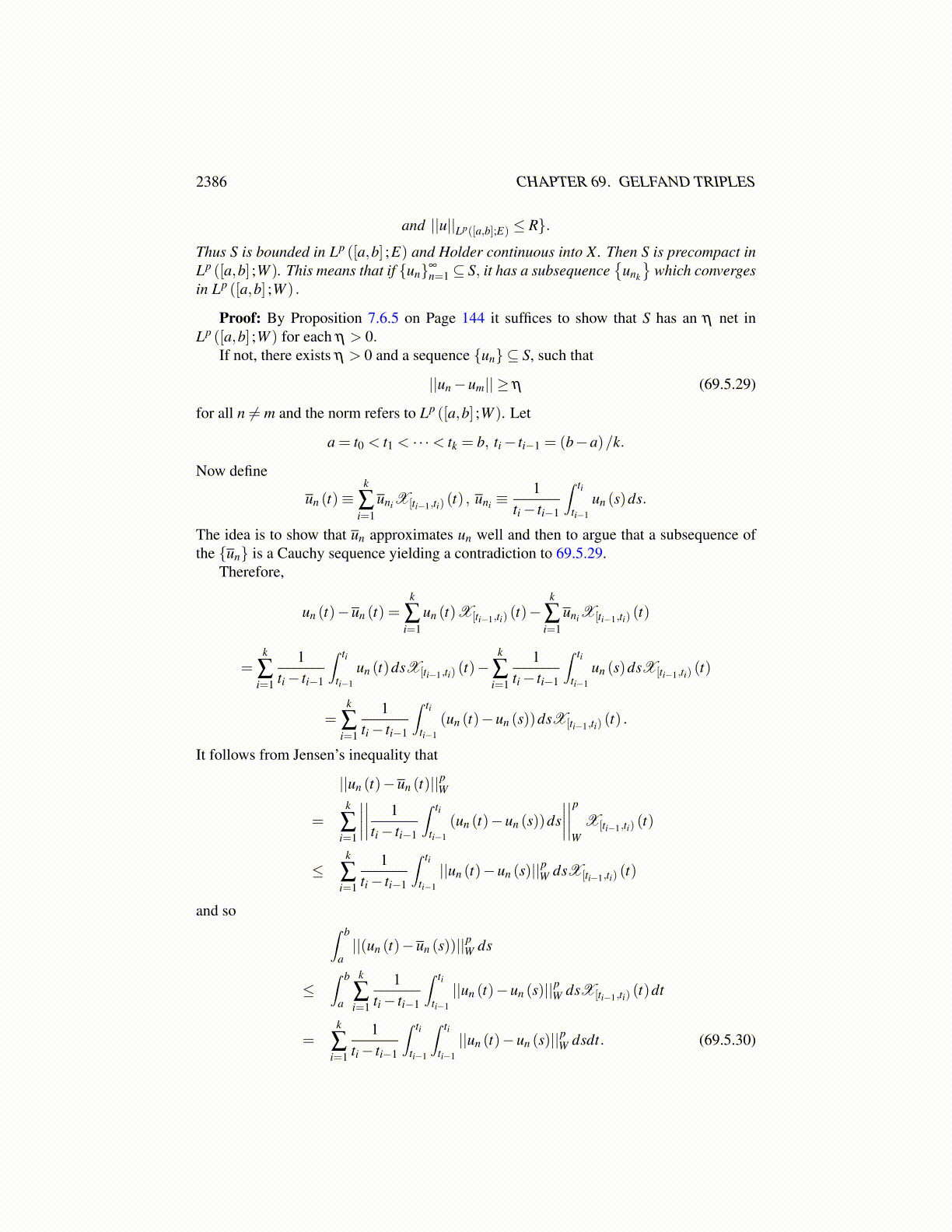
2386 CHAPTER 69. GELFAND TRIPLES
Proof of claim: Let ε > 0 be given. Let t ∈ [a,b] . Pick tm ∈ D∩ [a,b] such that in69.5.27 Cε R |t− tm|< ε/3. There exists N such that if l,n > N, then ||ul (tm)−un (tm)||X <ε/3. It follows that for l,n > N,
||ul (t)−un (t)||W ≤ ||ul (t)−ul (tm)||W + ||ul (tm)−un (tm)||W+ ||un (tm)−un (t)||W
≤ 2ε
3+
ε
3+
2ε
3< 2ε
Since ε was arbitrary, this shows {uk (t)}∞
k=1 is a Cauchy sequence. Since W is complete,this shows this sequence converges.
Now for t ∈ [a,b] , it was just shown that if ε > 0 there exists Nt such that if n,m > Nt ,then
||un (t)−um (t)||W <ε
3.
Now let s ̸= t. Then
||un (s)−um (s)||W ≤ ||un (s)−un (t)||W + ||un (t)−um (t)||W + ||um (t)−um (s)||W
From 69.5.27
||un (s)−um (s)||W ≤ 2(
ε
3+Cε R |t− s|1/q
)+ ||un (t)−um (t)||W
and so it follows that if δ is sufficiently small and s ∈ B(t,δ ) , then when n,m > Nt
||un (s)−um (s)||< ε.
Since [a,b] is compact, there are finitely many of these balls, {B(ti,δ )}pi=1 , such that for
s ∈ B(ti,δ ) and n,m > Nti , the above inequality holds. Let N > max{
Nt1 , · · · ,Ntp
}. Then
if m,n > N and s ∈ [a,b] is arbitrary, it follows the above inequality must hold. Therefore,this has shown the following claim.
Claim: Let ε > 0 be given. There exists N such that if m,n>N, then ||un−um||∞,W < ε.Now let u(t) = limk→∞ uk (t) .
||u(t)−u(s)||W ≤ ||u(t)−un (t)||W + ||un (t)−un (s)||W + ||un (s)−u(s)||W (69.5.28)
Let N be in the above claim and fix n > N. Then
||u(t)−un (t)||W = limm→∞||um (t)−un (t)||W ≤ ε
and similarly, ||un (s)−u(s)||W ≤ ε. Then if |t− s| is small enough, 69.5.27 shows themiddle term in 69.5.28 is also smaller than ε. Therefore, if |t− s| is small enough,
||u(t)−u(s)||W < 3ε.
Thus u is continuous. Finally, let N be as in the above claim. Then letting m,n > N, itfollows that for all t ∈ [a,b] ,
||um (t)−un (t)||W < ε.